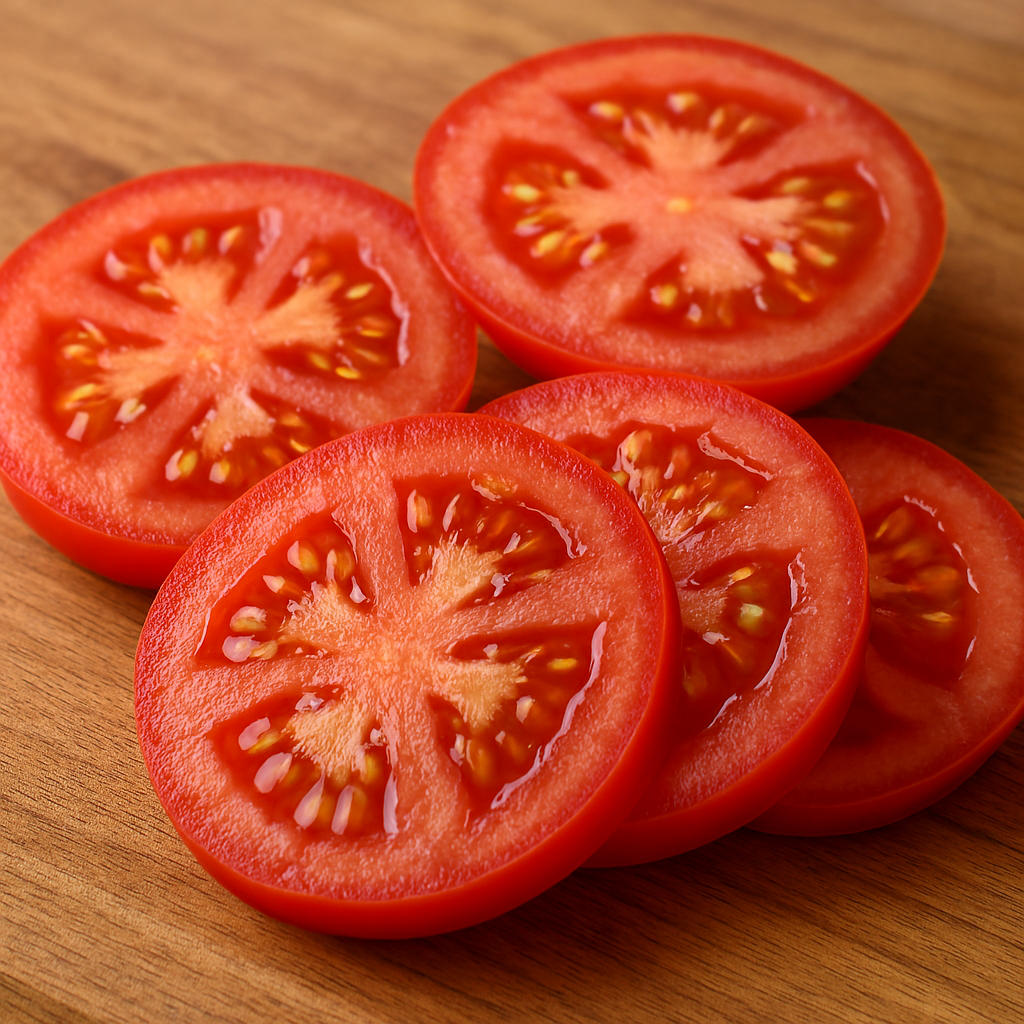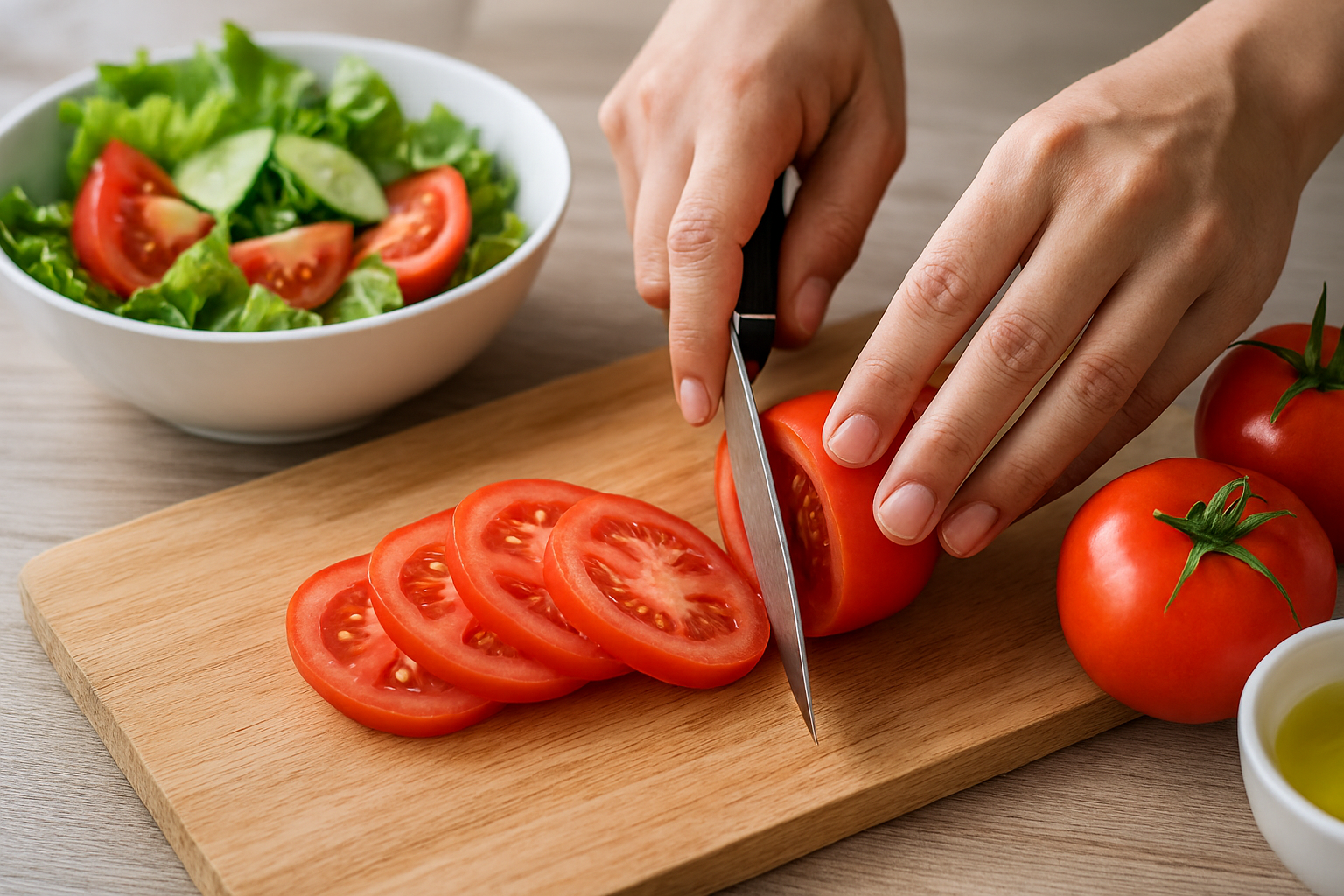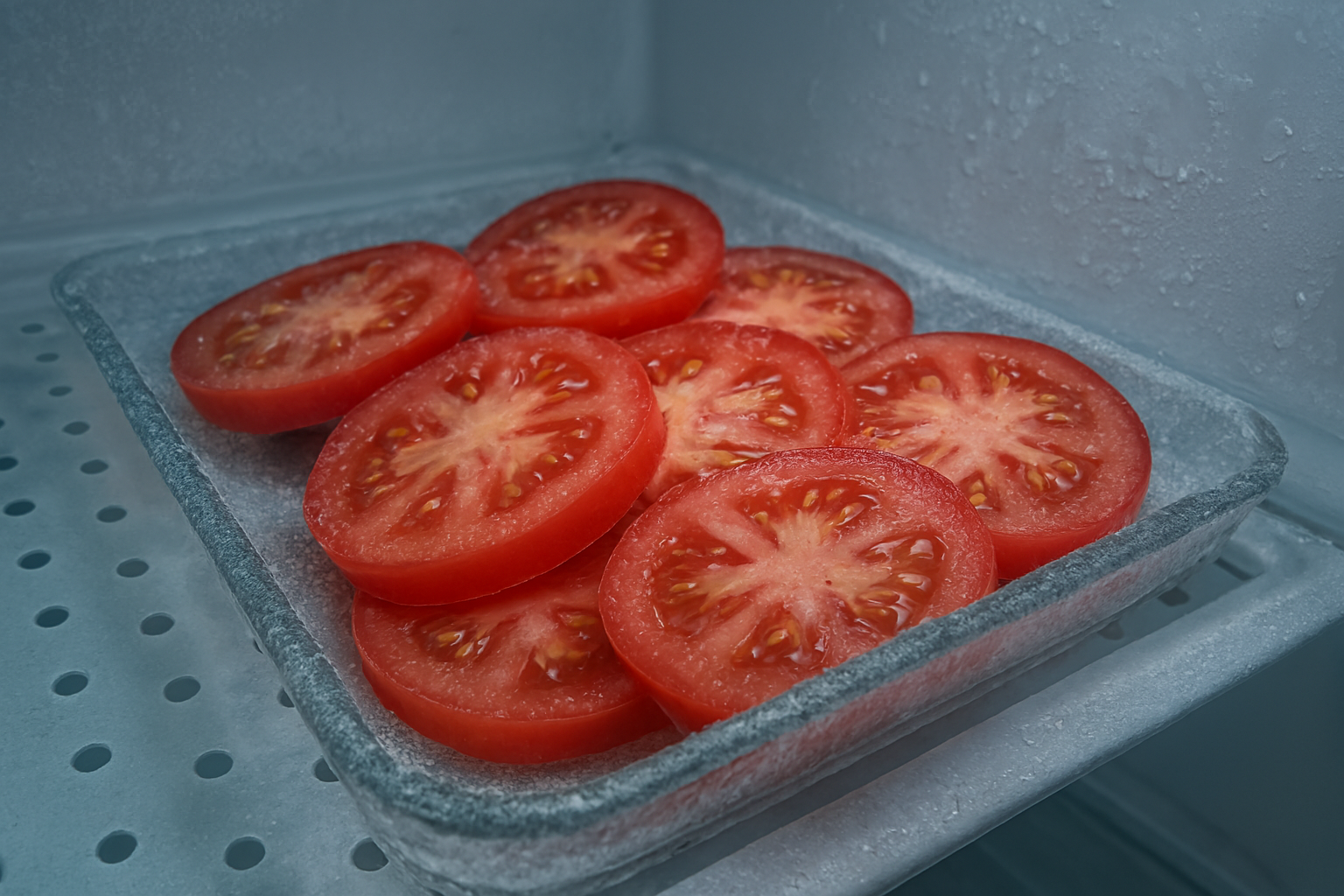Tomatoes are a staple in kitchens worldwide, used in everything from salads and sandwiches to sauces and salsas. While whole tomatoes are often stored at room temperature to preserve flavor and texture, sliced tomatoes fall into a different category when it comes to food safety.
Once cut, they become more vulnerable to microbial contamination and spoilage, requiring careful handling and temperature control.
This article explores the reasons behind the recommended holding temperature for sliced tomatoes, the risks of improper storage, and best practices for food service professionals and home cooks alike.
Why Sliced Tomatoes Require Temperature Control
Table of Contents

Whole tomatoes have a protective skin that acts as a barrier against bacteria and environmental contaminants. Once sliced, however, the internal flesh is exposed, creating a moist, nutrient-rich surface that can support the rapid growth of pathogens like Salmonella, Listeria monocytogenes, and E. coli.
According to the U.S. Food and Drug Administration (FDA) and the Centers for Disease Control and Prevention (CDC), cut tomatoes are considered Time/Temperature Control for Safety (TCS) foods. This classification means they must be kept at safe temperatures to prevent the growth of harmful microorganisms.
The FDA Food Code recommends that cut tomatoes be held at or below 5°C (41°F). This temperature threshold is based on extensive research into bacterial growth rates.
Most foodborne pathogens thrive between 5°C and 60°C (41°F to 140°F), a range known as the danger zone.
Holding sliced tomatoes below 5°C slows microbial activity to a near halt, significantly reducing the risk of contamination. Conversely, storing them at room temperature—even for a few hours—can allow bacteria to multiply rapidly, especially in warm or humid environments.
Tomatoes have been implicated in several foodborne illness outbreaks over the past two decades. In many cases, improper handling and storage were contributing factors. For example:
• In 2008, a multistate outbreak of Salmonella Saintpaul was linked to raw tomatoes served in restaurants and grocery stores.
• Investigations revealed that tomatoes were often stored at room temperature after slicing, allowing bacteria to proliferate before consumption.
These incidents underscore the importance of adhering to temperature guidelines, especially in commercial food service settings.
Best Practices for Restaurants and Food Establishments

Restaurants, cafeterias, and catering services must follow strict protocols when handling sliced tomatoes. Here are key recommendations:
1. Immediate Refrigeration
• After slicing, tomatoes should be placed in clean, food-grade containers and refrigerated immediately.
• Use shallow containers to promote rapid cooling.
2. Temperature Monitoring
• Refrigerators should be equipped with accurate thermometers.
• Staff should check and log temperatures regularly to ensure compliance.
3. Time Limits
• Sliced tomatoes held above 5°C should be discarded after 4 hours.
• This time limit is based on the FDA’s guidelines for TCS foods.
4. Cross-Contamination Prevention
• Use separate cutting boards and utensils for raw produce and meats.
• Wash hands thoroughly before and after handling tomatoes.
5. Labeling and Rotation
• Label containers with the date and time of preparation.
• Follow the “first in, first out” (FIFO) method to minimize waste and ensure freshness.
Safe Storage Tips for Home Cooks

While commercial kitchens are held to regulatory standards, home cooks should also be mindful of food safety. Here’s how to store sliced tomatoes safely at home:
Refrigerate Promptly
• Place sliced tomatoes in an airtight container and refrigerate within 2 hours of cutting.
• Avoid leaving them out on the counter, especially in warm climates like Kolkata.
Use Within 2 Days
• For optimal flavor and safety, consume refrigerated sliced tomatoes within 48 hours.
• Discard any that show signs of spoilage, such as mold, sliminess, or off odors.
Cleanliness Matters
• Wash cutting boards, knives, and hands before and after slicing.
• Consider using a produce wash or vinegar rinse to clean whole tomatoes before cutting.
Can You Freeze Sliced Tomatoes?

Freezing is an option for preserving sliced tomatoes, but it comes with trade-offs:
• Texture Changes: Frozen tomatoes become mushy upon thawing due to water content.
• Best Use: Frozen slices are ideal for cooked dishes like stews or sauces, not fresh salads.
To freeze:
• Lay slices on a parchment-lined tray and freeze until solid.
• Transfer to a freezer-safe bag or container and label with the date.
Regulatory Guidance and Industry Standards
The FDA’s Program Information Manual on Retail Food Protection outlines specific recommendations for tomato handling. It emphasizes that cut tomatoes must be treated like other TCS foods, such as dairy, meat, and cooked rice.
The CDC also highlights the need for improved tomato-handling practices in restaurants, suggesting that better training and oversight could reduce the risk of outbreaks.
For food safety professionals and educators, understanding the rationale behind temperature guidelines is essential. It’s not just about following rules—it’s about protecting public health.
• Microbial Growth – At temperatures above 5°C, bacteria enter the exponential growth phase, doubling every 20 minutes.
• Moisture and pH – Tomatoes have a high water activity and a pH around 4.3–4.9, which supports microbial survival.
• Surface Area – Slicing increases surface area, giving bacteria more room to colonize.
By controlling temperature, we interrupt this growth cycle and keep food safe.
Visual Overlays and Educational Aids
For content creators and educators, visual aids can enhance understanding and retention. Consider using:
• Infographics showing the danger zone and safe storage temperatures.
• Step-by-step guides for slicing and storing tomatoes.
• Printable cards with food safety tips for kitchen staff or students.
These tools empower audiences to make informed decisions and reinforce best practices.
Wrapping Up
Sliced tomatoes are delicious, versatile, and nutritious—but they must be handled with care. Whether you’re prepping a BLT in a café or a chutney at home, the rule is clear – keep sliced tomatoes at or below 5°C (41°F).
This simple step can prevent illness, preserve quality, and ensure that your culinary creations are both tasty and safe. By understanding the science and following best practices, we can turn everyday ingredients into responsible choices.
Leave a Reply